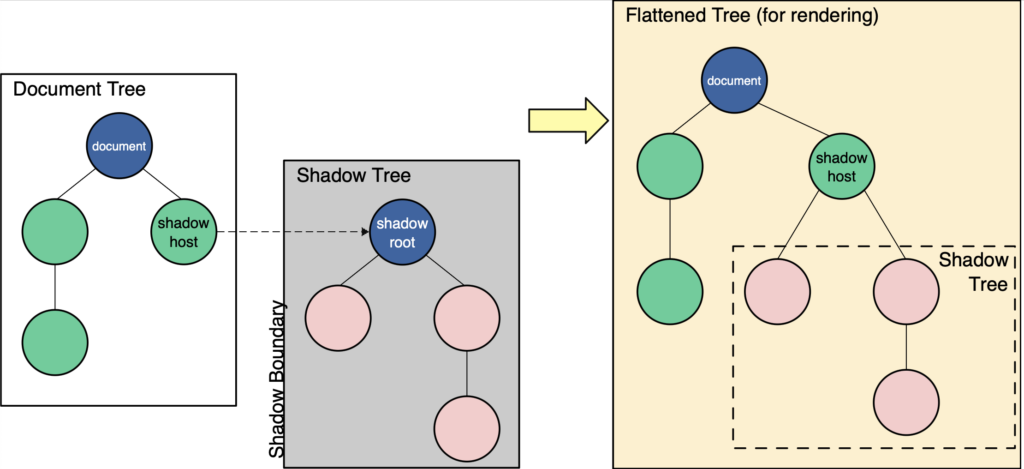What is the shadowDOM 🥷🏿?
Shadow DOM is a web standard that allows developers to encapsulate HTML, CSS, and JavaScript inside a web component, preventing it from interfering with the rest of the document. It creates a separate, isolated DOM subtree that is not affected by external styles or scripts.
Shadow DOM allows hidden DOM trees to be attached to elements in the regular DOM tree — this shadow DOM tree starts with a shadow root, underneath which you can attach any element, in the same way as the normal DOM.

Features
- Encapsulation
Styles and scripts inside a shadow DOM do not leak out, and external styles do not affect the shadowDOM. - Scoped Styles
CSS inside the shadow DOM applies only to its elements. - Custom Elements Support
Often used with Web Components to create reusable elements. - Shadow Root
The root of the shadow DOM tree, which is attached to a normal DOM element.
// Select an element
const element = document.getElementById('element');
// Attach a shadow root
const shadowRoot = element.attachShadow({ mode: 'open' });
// Add content inside shadow DOM
shadowRoot.innerHTML = `
<style>
p {
color: blue;
font-weight: bold;
}
</style>
<p>This is inside the shadow DOM!</p>
`;More about Web Components here.
Which essentially form the core fundamentals of most modern Javascript frameworks.
See the Pen web-component by Kurt Grüng (@kurtgrung) on CodePen.
